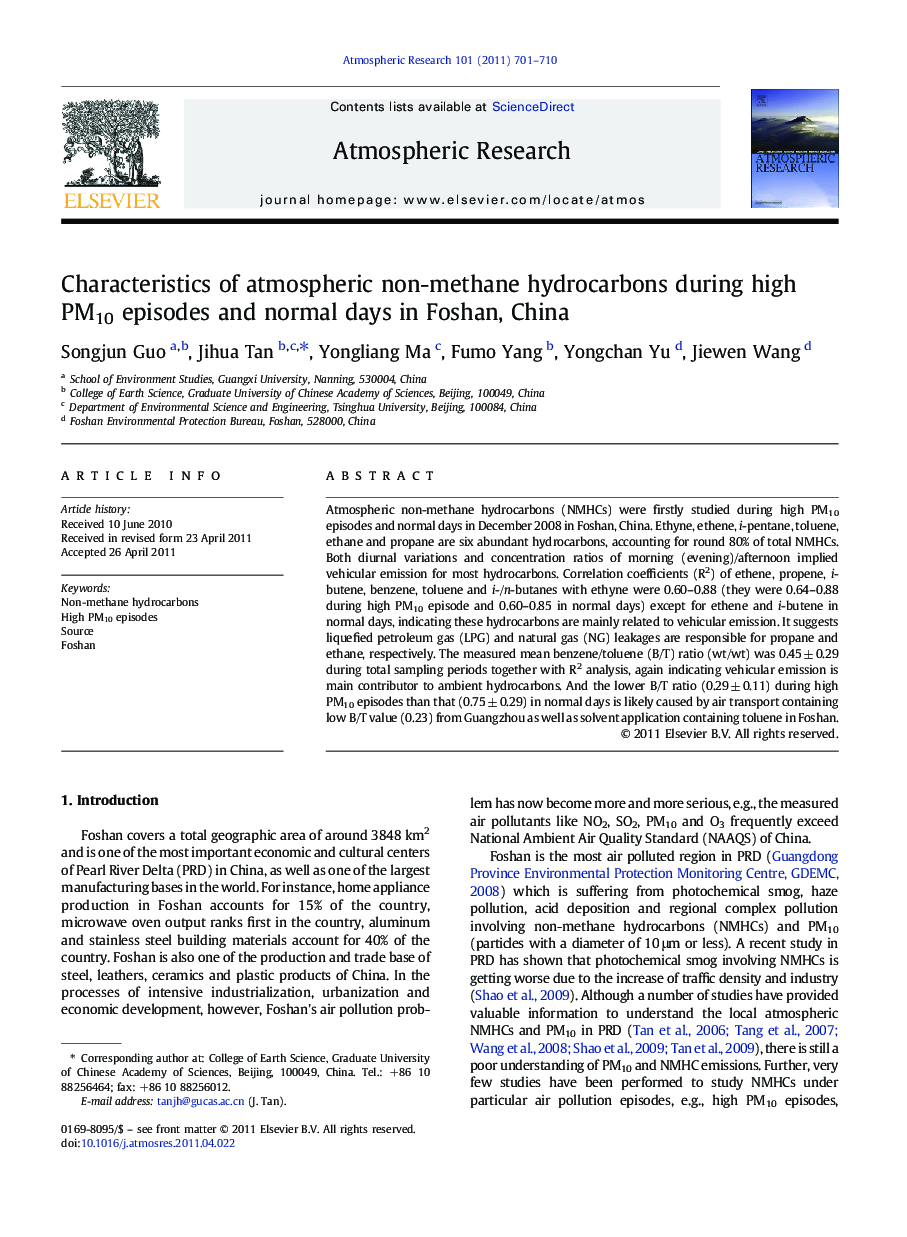| Article ID | Journal | Published Year | Pages | File Type |
|---|---|---|---|---|
| 4450345 | Atmospheric Research | 2011 | 10 Pages |
Atmospheric non-methane hydrocarbons (NMHCs) were firstly studied during high PM10 episodes and normal days in December 2008 in Foshan, China. Ethyne, ethene, i-pentane, toluene, ethane and propane are six abundant hydrocarbons, accounting for round 80% of total NMHCs. Both diurnal variations and concentration ratios of morning (evening)/afternoon implied vehicular emission for most hydrocarbons. Correlation coefficients (R2) of ethene, propene, i-butene, benzene, toluene and i-/n-butanes with ethyne were 0.60–0.88 (they were 0.64–0.88 during high PM10 episode and 0.60–0.85 in normal days) except for ethene and i-butene in normal days, indicating these hydrocarbons are mainly related to vehicular emission. It suggests liquefied petroleum gas (LPG) and natural gas (NG) leakages are responsible for propane and ethane, respectively. The measured mean benzene/toluene (B/T) ratio (wt/wt) was 0.45 ± 0.29 during total sampling periods together with R2 analysis, again indicating vehicular emission is main contributor to ambient hydrocarbons. And the lower B/T ratio (0.29 ± 0.11) during high PM10 episodes than that (0.75 ± 0.29) in normal days is likely caused by air transport containing low B/T value (0.23) from Guangzhou as well as solvent application containing toluene in Foshan.
Research highlights► Non-methane hydrocarbons are firstly studied during high PM10 episodes in Foshan of PRD. ► Ethyne, ethene, i-pentane, toluene, ethane and propane are six abundant hydrocarbons. ► Vehicular emission is the dominant source for ambient hydrocarbons in Foshan. ► Solvent application and air pollutant transport are likely two contributors to hydrocarbons.
